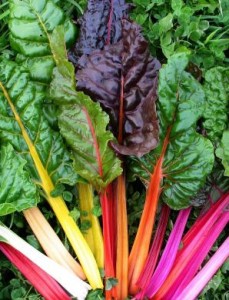
More evidence that low-calorie sweeteners are bad for your health
Studies show that artificial sweeteners can raise the risk of hypertension, metabolic syndrome, type 2 diabetes and heart disease, including stroke.

The link between chronic disease and a healthy diet continues to be studied in depth by scientists around the globe.
We all know that to stay healthy we need to get a good range of fresh fruits and vegetables, but that blanket recommendation doesn’t do much to guide us as to which types of produce give us the most bang for our nutritional buck.
A recent study by scientists at the US Centers for Disease Control and Prevention (CDC) had a stab at producing a Top 40 list of powerhouse produce. The list reveals some surprising results. For instance, although most people expected spinach to be closer to the top of the list, few could have guessed that blackberries would be closer to the bottom.
It’s for that reason that the list comes with a few cautions. In order to assess the fruits and vegetables on the list the scientists looked at the bioavailability levels of 17 key factors and nutrients as defined by the Food and Agriculture Organization of the United Nations and Institute of Medicine: potassium, fibre, protein, calcium, iron, thiamin, riboflavin, niacin, folate, zinc, and vitamins A, B6, B12, C, D, E, and K).
They then came up with a nutrient density score in order to rank the fruit and vegetables in order. The top ranking powerhouse produce looks like this:
| Item |
Nutrient Density Score |
| Watercress |
100.00 |
| Chinese cabbage |
91.99 |
| Chard |
89.27 |
| Beet green |
87.08 |
| Spinach |
86.43 |
| Chicory |
73.36 |
| Leaf lettuce |
70.73 |
| Parsley |
65.59 |
| Romaine lettuce |
63.48 |
| Collard green |
62.49 |
| Turnip green |
62.12 |
| Mustard green |
61.39 |
| Endive |
60.44 |
| Chive |
54.80 |
| Kale |
49.07 |
| Dandelion green |
46.34 |
| Red pepper |
41.26 |
| Arugula |
37.65 |
| Broccoli |
34.89 |
| Pumpkin |
33.82 |
| Brussels sprout |
32.23 |
| Scallion |
27.35 |
| Kohlrabi |
25.92 |
| Cauliflower |
25.13 |
| Cabbage |
24.51 |
| Carrot |
22.60 |
| Tomato |
20.37 |
| Lemon |
18.72 |
| Iceberg lettuce |
18.28 |
| Strawberry |
17.59 |
| Radish |
16.91 |
| Winter squash (all varieties) |
13.89 |
| Orange |
12.91 |
| Lime |
12.23 |
| Grapefruit (pink and red) |
11.64 |
| Rutabaga |
11.58 |
| Turnip |
11.43 |
| Blackberry |
11.39 |
| Leek |
10.69 |
| Sweet potato |
10.51 |
Leafy vegetables dominate the top of the powerhouse list and provide multiple nutritional benefits. However, researchers caution that eating fresh veggies is the key, and you may lose some of the benefits by cooking them.
Of the 47 food studies only 6 (raspberry, tangerine, cranberry, garlic, onion, and blueberry) failed to meet the scientists criterion (food that provides, on average, 100% DV of the qualifying nutrients per 100 kcal) for a powerhouse fruit or vegetable. Another, white grapefruit, came 41st on the list.
Had the scientists looked at different measurements, such as antioxidant potential, the results would have looked different. As if to underscore this the scientist say that while each of us should eat more of these powerhouse fruits and vegetables because they provide more nutrients, variety is still important in a diet.
Nevertheless, if you are looking to up your daily nutrient intake without upping calories the list provide valuable guidance.
Click on the following link for a great recipe for Watercress and Pink Grapefruit Salad.

Please subscribe me to your newsletter mailing list. I have read the
privacy statement